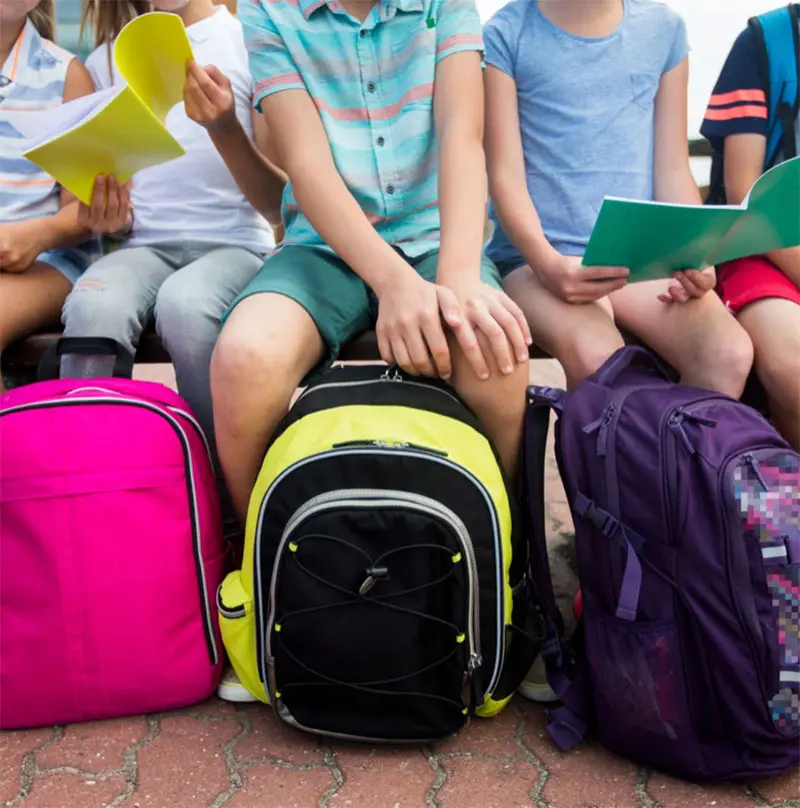The end of summer brings the excitement of a new school year, a busier schedule (especially for parents), and unfortunately a few potential aches and pains. Not just from a jump back into athletics, but heavy back-to-school backpacks.

Conditioning:
Many high school sports injuries can be prevented through proper conditioning, training, and equipment. It is important to also stay hydrated, as our Gulf Coast heat doesn’t seem to let up until well into fall. A healthy, well-balanced diet is also essential to optimize athletic training and classroom focus.
As an athlete, it is critical to gradually increase your activity and slowly build back up to a higher fitness level, rather than jumping right into sport if you are out of shape from other summer activities. Make sure you’re using proper technique and form to prevent injury. A coach is the best resource.
The pressure to excel in sports has grown, and with it a pressure on adolescent athletes to participate in only one sport and train year-round. This sport specialization has more of us in orthopaedics and sports medicine seeing a rise in overuse injuries. A few tips:
- Limit the number of teams in which your child is playing in one season.
- Do not allow your child to play one sport year-round. Taking regular breaks and playing other sports is essential to skill development and injury prevention.
Back pain prevention:
Even with laptops the rule these days, textbooks remain a load that strain the back, neck, and shoulder muscles. This discomfort is often short term, but over time can:
- Distort the natural curves in the middle and lower backs, causing muscle strain and irritation of the spine joints and rib cage.
- Lead to rounding of the shoulders.
- Cause a person to lean forward, reducing balance and making it easier to fall.
- Habitually carrying backpacks over one shoulder will strain muscles to compensate for the uneven weight and the spine will lean to the opposite side. This muscle imbalance can cause muscle strain, spasm, and back pain.
A good guideline: limit the weight of the backpack to 10-15% of the child’s body weight. Fortunately, there is little chance a child will be permanently injured, and no evidence of structural spinal deformity.
A few helpful hints on selecting and loading a pack:
- Choose lightweight material (canvas vs leather) with a padded back and two padded wide (2 inch) adjustable shoulder straps with individual compartments.
- Hip strap or waist belt can help redistribute the weight from the shoulders and back to the pelvis
- Consider a separate bag for the laptop or heavy electronics
- Use both shoulder straps and wear the backpack on the back rather than over one shoulder
- Pack the heaviest objects into the backpack first so they are carried lower and closest to the body
- Fill compartments so that the load is evenly distributed
- Adjust the straps to fit the backpack snugly to the child’s body, holding the bottom of the backpack 2 inches above the waist and keeping the top just below the base of the skull
- Lift the backpack using the leg muscles and keeping it close to the body
- Do not lean forward when walking, if this is necessary then there is too much weight in the backpack
If your child is still uncomfortable, adjust the pack and make sure they’re carrying only what’s essential for the day. Stashing what they can in the locker during the school day will also help.
